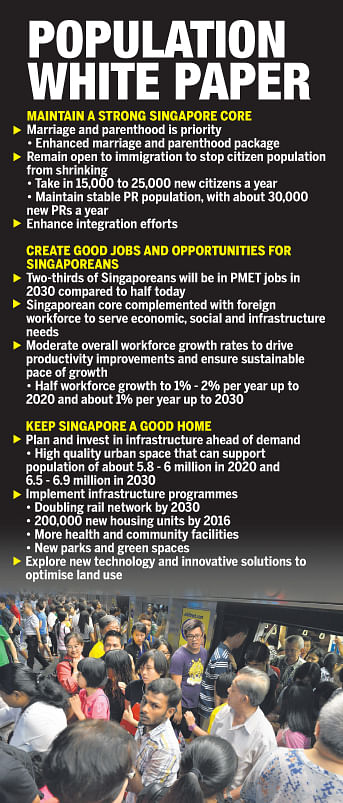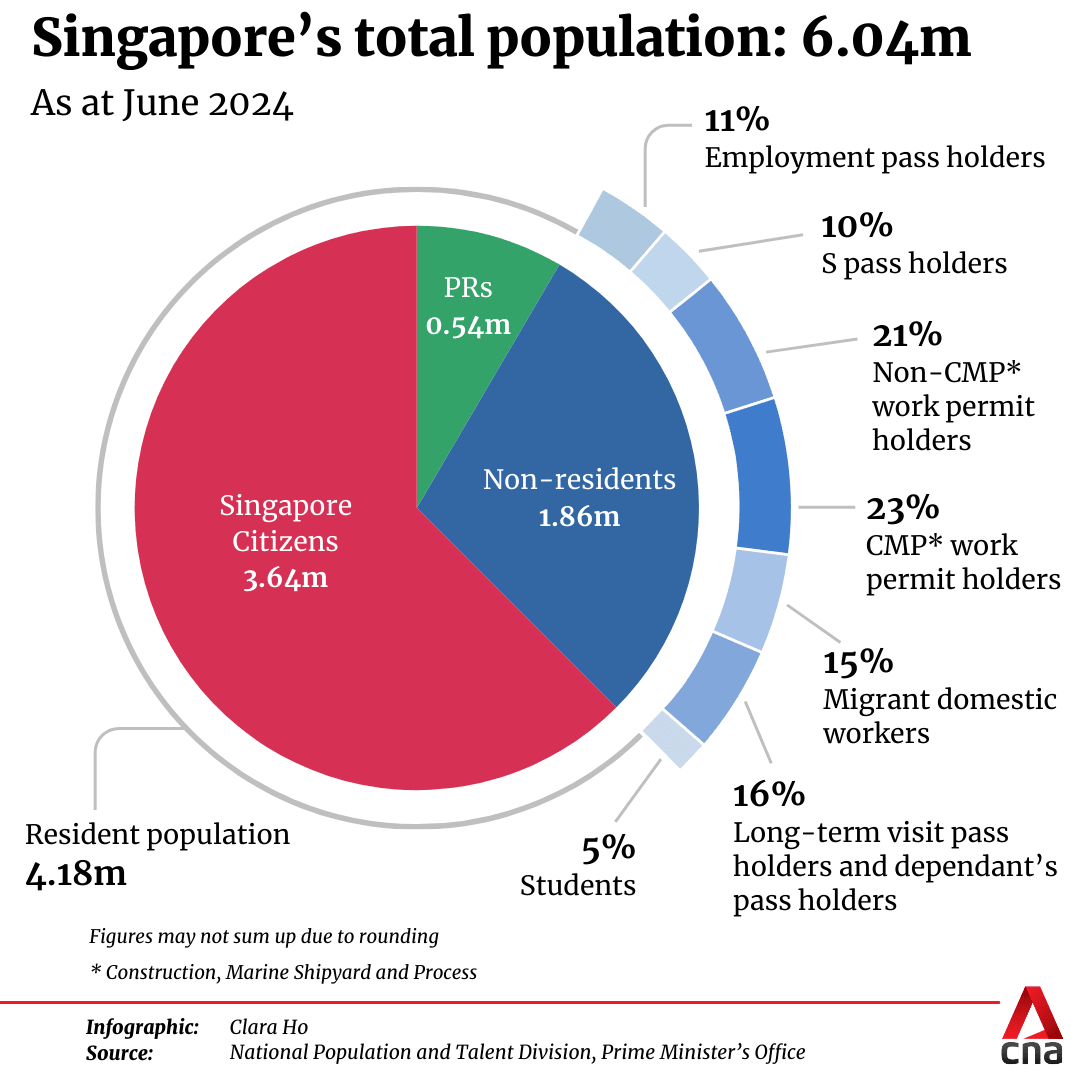Song Boh?

https://mothership.sg/2024/09/singapore-population-6-million/
 September 24, 2024, 05:09 PM
September 24, 2024, 05:09 PM
Singapore’s total population has exceeded 6 million for the first time.
The growth in the non-resident population contributed to more than half of the population increase from 2023.
As of June 2024, the country’s population hit 6.04 million, which marks a 2 per cent increase from 2023.
The figures were published on Sep. 24 in the annual Population in Brief report by the National Population and Talent Division (NPTD) of the Prime Minister’s Office and its partner agencies.
The Singapore citizen and permanent resident populations increased by 0.7 per cent, from 3.61 million to 3.64 million, and 1.2 per cent, from 538,600 to 544,900, respectively.
The non-resident population jumped by about 5 per cent from about 1.77 million in 2023.
Work permit holders contributed most to the increase at 44 per cent of the non-resident population.
This was followed by migrant domestic workers at 15 per cent of the non-resident population.
NPTD also reiterated that Singapore’s total population is likely to be "significantly" below 6.9 million by 2030.
This figure was previously included in a Population White Paper released in 2013 for planning purposes but sparked public disquiet.
The government explained it was not a forecast or target.
Minister in the Prime Minister's Office Indranee Rajah said in the Committee of Supply debate in 2023 that the government does not plan on a single population planning parameter, but on birth rates, life expectancies, and migration that make up the various demographic trends.
NPTD added that the planning parameter of 6.9 million remains relevant for the 2030s based on these various scenarios that are developed to stress-test assumptions and allow for a range of possible outcomes.
The report also showed that the annualised population growth rate over the last five years (2019 to 2024) was slightly higher than in the preceding five-year period (2014 to 2019).
This was mostly due to post-pandemic growth in the number of work permit holders.
They are mostly in the construction, marine shipyard and process (CMP) sectors that are catching up on projects delayed by the Covid-19 pandemic, the report said.
NPTD said Singapore residents continue to fill higher-paying jobs.
Resident employment has been growing in sectors such as financial and insurance services, information and communications, and professional services, it was noted.
-----------------

https://mothership.sg/2024/09/singapore-population-6-million/
S'pore population hits record high of 6.04 million, with non-residents at 1.86 million
Crossed 6 million for the first time. Belmont Lay |Singapore’s total population has exceeded 6 million for the first time.
The growth in the non-resident population contributed to more than half of the population increase from 2023.
As of June 2024, the country’s population hit 6.04 million, which marks a 2 per cent increase from 2023.
The figures were published on Sep. 24 in the annual Population in Brief report by the National Population and Talent Division (NPTD) of the Prime Minister’s Office and its partner agencies.
Breakdown
There were 4.18 million residents and about 1.86 million non-residents, which comprise the foreign workforce, migrant domestic workers, dependants and international students.The Singapore citizen and permanent resident populations increased by 0.7 per cent, from 3.61 million to 3.64 million, and 1.2 per cent, from 538,600 to 544,900, respectively.
The non-resident population jumped by about 5 per cent from about 1.77 million in 2023.
Work permit holders contributed most to the increase at 44 per cent of the non-resident population.
This was followed by migrant domestic workers at 15 per cent of the non-resident population.
NPTD also reiterated that Singapore’s total population is likely to be "significantly" below 6.9 million by 2030.
This figure was previously included in a Population White Paper released in 2013 for planning purposes but sparked public disquiet.
The government explained it was not a forecast or target.
Minister in the Prime Minister's Office Indranee Rajah said in the Committee of Supply debate in 2023 that the government does not plan on a single population planning parameter, but on birth rates, life expectancies, and migration that make up the various demographic trends.
NPTD added that the planning parameter of 6.9 million remains relevant for the 2030s based on these various scenarios that are developed to stress-test assumptions and allow for a range of possible outcomes.
Non-resident population contribute economically
The non-resident population depends on our economic and social needs, the report said, and the foreign workforce "complements our local workforce and allows companies to access a broader range of skills from the global labour pool".The report also showed that the annualised population growth rate over the last five years (2019 to 2024) was slightly higher than in the preceding five-year period (2014 to 2019).
This was mostly due to post-pandemic growth in the number of work permit holders.
They are mostly in the construction, marine shipyard and process (CMP) sectors that are catching up on projects delayed by the Covid-19 pandemic, the report said.
NPTD said Singapore residents continue to fill higher-paying jobs.
Resident employment has been growing in sectors such as financial and insurance services, information and communications, and professional services, it was noted.
-----------------



